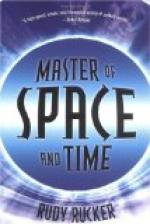Professor, now Sir, Thomson continued to take an active part in the work of designing and laying new cables. Not only did he contribute the apparatus and the scientific information which made cables possible, but he attained renown as a physicist and a scientist in many other fields. In 1892 he was given the title of Lord Kelvin, and it was by this name that he was known as the leading physicist of his day. He survived until 1907.
To Cyrus W. Field must be assigned a very large share of the credit for the establishment of telegraphic communication between the continents. He gave his fortune and all of his tremendous energy and ability to the enterprise and kept it alive through failure after failure. He was a promoter of the highest type, the business man who recognized a great human need and a great opportunity for service. Without his efforts the scientific discoveries of Thomson could scarcely have been put to practical use.
The success of the first cable inspired others. In 1869 a cable from France to the United States was laid from the Great Eastern. In 1875 the Direct United States Cable Company laid another cable to England, which was followed by another cable to France. One cable after another was laid until there are now a score. This second great development in communication served to bring the two continents much closer together in business and in thought and has proved of untold benefit.
XI
ALEXANDER GRAHAM BELL, THE YOUTH
The Family’s Interest
in Speech Improvement—Early Life-Influence
of
Sir Charles Wheatstone—He
Comes to America—Visible Speech and the
Mohawks—The Boston
School for Deaf Mutes—The Personality of
Bell.
The men of the Bell family, for three generations, have interested themselves in human speech. The grandfather, the father, and the uncle of Alexander Graham Bell were all elocutionists of note. The grandfather achieved fame in London; the uncle, in Dublin; and the father, in Edinburgh. The father applied himself particularly to devising means of instructing the deaf in speech. His book on Visible Speech explained his method of instructing deaf mutes in speech by the aid of their sight, and of teaching them to understand the speech of others by watching their lips as the words are spoken.
Alexander Graham Bell was born in Edinburgh in 1847, and received his early education in the schools of that city. He later studied at Warzburg, Germany, where he received the degree of Doctor of Philosophy. He followed very naturally in the footsteps of his father, taking an early interest in the study of speech. He was especially anxious to aid his mother, who was deaf.




